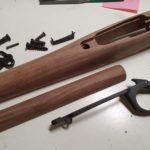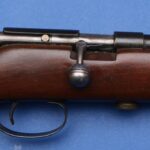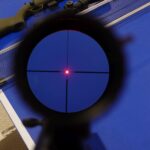
Introduction
Broadheads that bow hunters choose seems like an area where there’s plenty of fantasy and marketing, and very little substance. Realistic differences between broadheads out there is more academic and marketing than real performance. For a bow that won’t tune well with a fixed broadhead, expandable broadheads can be an answer. For traditional or low weight pull bows, cut on contact broadheads may give better penetration. For everyone else, almost any fixed, chizelled tip broadhead will kill your deer or moose if you do your part. At the very lowest price/quality, weight and concentricity can hurt your accuracy a bit. Some of the cheaper broadheads also have lame locking mechanisms that may mean losing a blade inside a deer. But anything above that is gravy, and as an inexpensive, yet moderate quality broadhead, Cabela’s FX3 broadhead do the trick.
Blades
I chose 100 grain broadheads, and these came with a 3 blade, 1 1/8″ cutting diameter. I really liked the feel of the blades as they felt strong enough to withstand hitting bone and not bend or dull instantly. The lock washer that fits over the blades at the back of the shank was also sturdy enough to keep the blades from kicking out.
Trocar Tip
The trocar tip on the FX3 is meant to provide a sharp point that glides past bone. Originally designed for medical applications, trocars were meant for surgery where minimal resistance was required. In a hunting application, the trocar tip provides a path for the rest of the arrow to follow while the blades do the real damage. They offer a bit more resistance than some of the cut on contact broadheads, but they are really durable and don’t expend as much energy on contact with bone. Modern bows in a 60-70lb pull will have more than enough power to still drive a trocar tipped arrow right through a deer or moose on any sane shot, so I don’t find the slight cutting advantage to be useful.
Accuracy
I test shot all 6 broadheads with a Diamond Outlaw from distances of 20 and 40 yards. While point of impact changed slightly compared to field points, I found that accuracy was still about 90% that of the field points. I did fire them through some paper to paper tune the bow to the broadheads, but found that further tuning of the bow was unnecessary.
Summary
Ultimately, I’d recommend that any beginning bow hunter buy 6 of their desired broadheads. The 3 that come in most packages is really cutting it close. Make any mistake firing the broadheads at a target and you’ll be down to 1 or 2 hunting ready arrows only. The 6 that come in this package for $25 will ensure you have the same heads that you practice with ready for the hunt.










